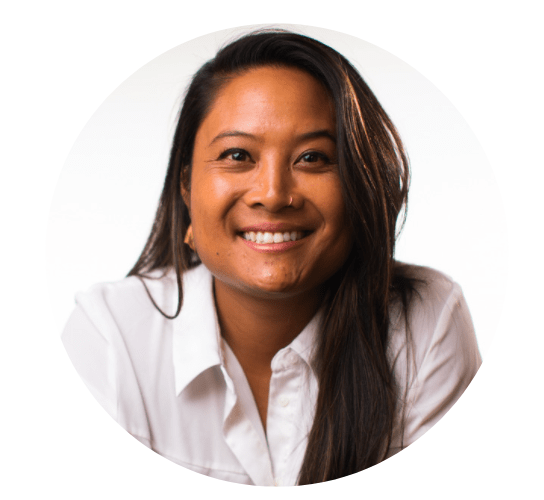
As sex educators, we are deeply concerned about the recent effort to paint our work as “grooming” or “sexualizing” children. In fact, our goal is the exact opposite: to make sure children have the skills needed to repel the tactics used by predators.
In May 2021, conservative commentator Candace Owens accused one of us of being a pedophile. “[S]he should have to register as a sex offender,” Owens tweeted to her 3 million followers.
The crime? Acknowledging to first-graders that it’s normal to be curious about their genitals.
In today’s fractious political climate, critics argue that in giving children accurate, scientifically based information about their bodies, we are either preparing them to be molested or are predators ourselves.
In March, Tucker Carlson called it “common sense“ to not talk to children younger than third grade about their genitals because it is “disgusting and probably illegal.”
This line of reasoning is gaining traction every day, whether in Florida’s Parental Rights in Education law, which critics have called the “Don’t Say Gay“ law, or a New Jersey school district announcing it would limit sex ed instruction to a single 35-minute period on the last day of school in grades 2, 5 and 8.
That is hardly enough time to cover basic anatomy, let alone the other things we believe young students need: an understanding of appropriate boundaries and how their body communicates danger signals to them.
The rhetoric has grown so fevered in recent weeks that we wanted to get perspective from someone on the front lines: Rahel Bayar, a former sex crimes and child abuse prosecutor.
She is the founder and CEO of The Bayar Group, an organization that works with schools to prevent sexual misconduct and child abuse.
“What I saw as a prosecutor was kids who didn’t come forward, or when they did come forward, they would say things like ‘My tummy hurts’ or ‘My tummy itches,’” Bayar said. “What they really meant was their vulva, not their tummy.”
Without the correct language for their anatomy, adults don’t understand what children are trying to say.
“One of the biggest pieces of abuse prevention is to teach your children the correct anatomical names for their body parts and not attach any type of shame or embarrassment to them,” Bayar said.
When kids learn that anything “down there” is shameful, they are less likely to come forward because they’re afraid of getting in trouble for admitting that someone touched them.
So the question of the moment is: How is sex education different from grooming?
“My God! Why is that even a question?” Bayar laughed. “Grooming typically involves secrecy … which is one of the reasons why we teach the difference between secrets and surprises. Secrets have no ending and surprises do. We start teaching kids that at a very, very early age because secrets are what people who groom children use to silence them.”
Grooming preys on fear, shame and silence. Sex education seeks to dispel them through transparency.
Lessons for young children include correct anatomical terms for body parts including genitals and having control over their “body bubble,” or zone of privacy.
The goal is to help children recognize and repel predatory behavior by understanding their body’s warning signs of danger: things like sweating when it’s not hot, trembling when it’s not cold, a racing heart when you haven’t moved, or feeling like you have to urinate when you just went to the bathroom. Then they practice different ways of saying “no” and “I don’t keep secrets with adults.”
Children don’t need to hear the words “sex” or “predator” to learn basic safety skills that can repel groomers.
While children may not yet be able to verbalize why these lessons are important, there is no scarcity of adults with stories to tell about how lack of appropriate education harmed them as children.
On the podcast “Good Girls Talk About Sex,” everyday women discuss their sex lives, including their earliest introduction to their own body. In over 100 interviews conducted since 2019, more than 25 percent of interviewees report that they began exploring their own genitals by age 5. But for many, this exploration was shrouded in the type of secrecy and shame we’re seeking to eliminate.
Lynn, age 49 at the time she was interviewed, had no access to information about her body at home or school. “I was so uninformed about it that I reached down between my legs … and my fingers sort of fell into my vagina,” Lynn recounted. “I thought that I wasn’t finished at the bottom. I thought I had a birth defect.” For over a year she believed she was dying. This fear of her own body, coupled with lack of accurate information, left her susceptible as a teenager to grooming by men 20 years her senior.
As uncomfortable as it may be to think about, skilled predators have an especially insidious tool: manipulating the child’s body so the abuse brings the child a sense of physical gratification. As Bayar noted, “We have to acknowledge the fact that our bodies have physiological reactions to touch and at different ages, that means our bodies respond in different ways.”
Cathy, 52 at the time she was interviewed, was molested from age 6 to 11.
“My first memory of sexual pleasure was very confused because I was having pleasure but it was during abuse … There wasn’t sex ed and I felt ashamed. I wasn’t sure why my body was responding the way it did.” For decades, it was hard for her to decouple the concepts of sexuality and abuse, so even masturbation was fraught. “I had associated sexuality with abuse or power struggles, and not having control over my body.”
Both of these women — and so many more — would have been well served by basic education about their bodies as children. Although we hear the most about disclosures of assault from women and girls, sexual abuse occurs across all genders. According to the Centers for Disease Control and Prevention, 1 in 4 girls and 1 in 13 boys in the U.S. experience child sexual abuse. Because there is a social prohibition on boys appearing “weak,” their abuse experiences are even less likely to be reported.
Melissa Pintor Carnagey, founder of Sex Positive Families, said in a conversation with us that “informed kids grow into empowered and prepared adults who are better able to have healthy relationships, know their bodies and to be safer along their journey. Sexuality education is the resource that helps them get there.”
In the current climate, how can you make sure that all children receive the education they need and deserve?
Vote.
Too often we vote for the national races at the top of the ticket, then gloss over elections happening closer to home. Decisions about sex ed are being made at your local school board and on the city, county and state level.
Before going to the voting booth, learn how candidates view the need for dedicated time to teach children about consent and anatomy, and vote accordingly.
Whether or not your school embraces sex education for all students, you can also help kids get the information they need at home. Work with your school’s PTA to offer parents workshops from sex educators who can provide tools to communicate with children about sex with less anxiety.
There is a #MeToo generation of adults who struggle to have effective conversations about these life-saving topics, but this can stop with Gen Z. We, as their trustees and caregivers, can equip our children with at least one tool that has been proven to protect them: sex education.
Originally posted on NBC’s THINK: Opinion, Analysis, Essays
